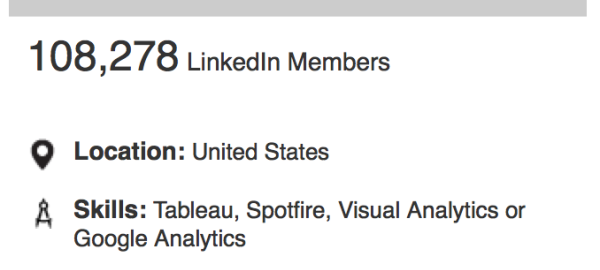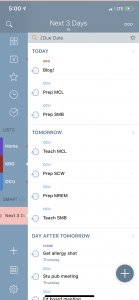Boasting 350+ million users worldwide, LinkedIn is a goldmine for marketers willing to establish and test a paid advertising strategy. The business social network’s ad platform allows users to create a variety of ads and selectively target distinct user profiles. The result is that specific content reaches ideal prospects, netting conversions that matter.
This guide will show you how to craft a winning LinkedIn advertising strategy from start to finish. Highlighting how to find your target audience, ways to convert those leads, metrics worth measuring, and the expected ROI for a campaign.
By the time you’re done here, you’ll be confident in your abilities to put a LinkedIn advertising strategy to work for your business.
1. Why Use LinkedIn for Advertising?
LinkedIn is about business, so it’s great for B2B products and services aimed at the professional crowd. If your goal is to increase your visibility in your industry and deliver focused advertisements, this paid channel will be huge for you. After debuting the Pulse and Influencer efforts, the platform has also evolved into a content site, playing host to a professional-grade news feed.
The ability to target users by employer, job title, role, skills, and interests provides adjustable and results-oriented advertising options. Advertising on LinkedIn is quite similar to the platforms provided by Facebook, Twitter and Google. The self-service platform allows you to design different types of ads, create and pursue specific segments and set your bids for specific campaigns. While giving you all the advertising data you need for campaign optimization IE measuring clicks, conversions, and impressions.
Here’s a few questions to keep in mind when starting a LinkedIn ad campaign:
- What is/are the job title(s) for my target audience?
- Where does my target audience work?
- What unique skills/interests does my target audience have?
- What role does my target audience hold in their company?
2. How to Target Effectively with LinkedIn Advertising
Targeting options for this platform are similar to Facebook and Twitter, but LinkedIn moves beyond the basics and up to the next level. Company size, title, education, industry, and geographic targeting is available.
You might also eliminate specific groups, companies, skills or fields of study from your ad sweep. Say you’re targeting marketers, but don’t want the competition to see your ads – simply omit their name. Maybe you’re growing your mailing list but don’t want a certain set of people to click a free download you’re offering in your ad (because it’s too simple or over their heads). No problem – just eliminate certains skills or positions from the targeting.
(Source)
A targeting profile for software designers at software companies in the Bay Area would look like this:
- Software designers
- Companies with 51 – 200 employees
- Software & Development industries
- In and around the San Francisco Bay Area
(Source)
Here’s a visual for a sample software designer audience. While you might be targeting a broad scope of persons, the more granular the audience you decide to pursue, the higher the ROI on the ads will be. Creating separate ad campaigns for users trained in Spotfire and Tableau – with custom ad copy for each – will net higher CTR and more targeted information.
The real value of such variable targeting is being able to run and test multiple campaigns to find what works best. To find your specific audience you might experiment with various targeting scenarios, different copy, landing pages for lead conversion, and CTAs to dial in your ad performance.
Here’s a few segments to think about, using the example of mid-size ad agencies:
Segment 1:
- Industry: Marketing & Advertising
- Job Title: Marketing Manager, CMO, VP of Marketing
- Company: Size: 50 – 200 employees
- Location: North America, Oceania, England
Segment 2:
- Company: List (up to) 50 ad agencies you’d like to target
- Job Category: Marketing; Seniority: CXO, Director, Manager
- Location: North America, Oceania, England
Segment 3:
- Function: Marketing; Seniority: CXO, Director, Manager
- Skills: Digital Marketing
- Location: North America, England, Netherlands, Oceania
- Industry: Marketing & Advertising
How wide or narrow the focus of your campaign will be is also a matter of judgment and experimentation. The first set of ads you run could target 50,000 people. But micro-campaigns are also very effective. Running 50 micro-campaigns that target 1,000 people might be better for your product or service offering.
If you find that your audience size ends up being too small, use LinkedIn’s suggested keyword options. Very similar to Google’s keyword recommendations, it’s a means of broadening your scope within relevant demographics. Here’s what happens when you enter “Skills” such as Tableau and Spotfire:
(Source)
3. Audience Expansion
There’s an option for what LinkedIn calls Audience Expansion. “Enabling this feature can increase your campaign’s reach by also including members similar to the target audience you’ve selected.”
Unchecking this box will keep your search as targeted as possible. You might like this option for increasing brand awareness, but this can be costly. The pay per click and pay per impression payment model LinkedIn uses could be prohibitive if you’re using the platform to target specific user ranges. We’ll dip into the costs and ROI of LinkedIn advertising in a moment.
But first, let’s look at a successful sponsored ad from CommVault that directly targets their audience:
(Source)
Attention spans are short, so this single line of text gets right down to the point – the pain point. The emotional appeal of the ad is precise, saying to the viewer: ‘We know your struggle’. The great headline offers five troubleshooting teasers, five easy ways to a solution.
Why it works: This ad empathizes with the prospect’s challenges and then provides the solution.
4. Anatomy of a LinkedIn Ad
Linkedin allows you to create multiple ad variations. Two types of ads are available on LinkedIn: sponsored ads and text ads.
Since your audience isn’t actively looking for you, both ad types are more push than pull. This means that you’ll want to really make ads stand out and capture member’s attention.
Both include:
- Headline
- Ad copy
- Destination URL
- Thumbnail photo
Headline
Short, punchy copy for headlines is always crucial. Using the title of audience members can also be effective. The headline limit is 25 characters.
Ad copy
Quickly tempt your audience with a value proposition. Free downloads have proven very effective at driving lead generation efforts as well. With a separate landing page established for each ad campaign, you’ll be able to measure results directly from different ad copy. Copy is limited to 75 characters, or two lines.
Destination URL
This can be a LinkedIn page or an external URL. Ideally, an external landing page may be tailored to the LinkedIn members you’re targeting. Creating a channel to steer your ideal audience to will pay off in terms of qualified lead generation. Taking visitors to your homepage is less than optimum. But if you decide to drive traffic to your website, tagging your URLs will allow you to measure the engagement and quality of incoming traffic through analytics.
Image
Pictures of people are ideal, because people like to see people. According to the LinkedIn optimization team, photos of women drive the best click through rates. Simple photos will always be best. Using your brand logo is only recommended if you’re focusing on building brand awareness.
5. Who will see my LinkedIn Text Ads?
These ads will be visible to anyone surfing LinkedIn and the LinkedIn Audience Network partner sites. These partner sites are mostly high-end media sites, some of them are part of the Collective Media ad network and the Doubleclick exchange. Such partners include:
- The New York Times
- Business Week
- CNBC
Here’s an example advertisement:
(Source)
6. The Cost of LinkedIn Advertising
There are two options for setting up ads: cost per click (CPC) and pay per impression (PPM) for every 1,000 views.
For sponsored ads, CPC is best because people don’t click through nearly as much on sponsored posts. But, this is still a great way to develop recognition and brand visibility. LinkedIn will keep the ad up until they hit the money mark, so micro-targeting campaigns are great with sponsored content. Highly targeted ads for smaller audiences (with highly targeted landing pages) will return a much higher ROI.
Switching up the ads at least once a month can help with impressions and improve CTR. New ads always get more attention and experimenting with different headlines and copy can make all the difference in terms of CTR.
CPC ranges from the $ 2 minimum to around $ 7 per click. LinkedIn will provide a suggested bid range to reach the top position – some can shoot up to $ 12. Click prices are established by targeting demands, inventory, and demand for the audience. The minimum daily budget to advertise is $ 10.
For text ads, PPM is recommended. These ads are great for lead generation. You’ll be able to deliver an incentive to download a free offer or white paper in order to bring prospects into your funnel. Text ads can also piggyback off of sponsored content. After members feel familiar with your brand through sponsored ads, they’ll be more likely to click text ads and become part of your funnel.
If your advertising budget exceeds $ 25,000 a quarter, access the premium advertising tools LinkedIn has to offer, such as Lead Accelerator, display ads, sponsored groups, and sponsored InMails. These amazing tools offer some very direct channels to target buyers.
7. Click-Through Rates for LinkedIn Ads
LinkedIn cites a good click through rate for sponsored ads at 0.025% – but a great photo and copy can definitely boost that up. Aiming for a CTR of .08% to .10% will leave you in good shape. But .30% is absolutely possible.
Ads that achieve more engagement will be shown more continuously than those receiving little or none. This is how LinkedIn determines if a particular ad is resonating with the audience.
A typical text-ad CTR hovers around 0.005% – 0.020%. That said, this can vary greatly given your targeting, copy, and offer.
Example: Bizible
Targeting a specific industry can really boost CTRs and ROI. Marketing and analytics platform Bizible saw great success in sharing a customer success story and linking to a landing page.
(Source)
The ad works well for the audience because it showcases an industry-familiar logo, a complementary product or service, and identifies directly with readers.
The ad performed very well. Bizible says their CTR for industry targeted ads usually sticks around 0.3%, 20% higher than their content download advertisements.
This ad pulled a CTR of .45%.
Takeaway? Targeting verticals with industry specific ads allows you to be very focused in your ad content and create copy that sings to your target audience.
8. Lead Capture with LinkedIn
Two options are available here: a landing page or LinkedIn “Lead Collection.”
(Source)
After someone requests to contact you about an ad, you receive an email. This is convenient for the user because their browsing goes uninterrupted. It’s great for you because you can immediately send a follow-up email.
We’ve talked about how great it is to set up a separate landing page for each LinkedIn ad. Say you’re like Jacobs & Clevenger and you’re offering an aspirational, free content download to your audience:
(Source)
A free tool could easily be offered from an existing page on your website. Or perhaps you’re trying out a differing headlines, content, or photos in the different ad campaigns. Separate landing pages running from separate URLs off your site can provide great insights on how best to engage your target audience.
Wrapping Up
With its wealth of business professionals and customizable advertising platform, LinkedIn can be a fantastic paid resource for marketers. With so many variables to target, experimentation is a must. You can generate some serious leads when you dial in a winning combination of content, creative and copy. Be sure to establish proper landing pages or lead tracking through LinkedIn. As well, use analytics on the back end to gauge your ROI and test the conversion quality of your ongoing and separate ad campaigns.
Digital & Social Articles on Business 2 Community
(90)
Report Post













